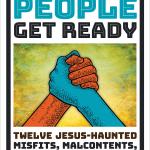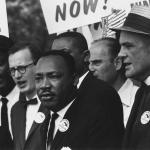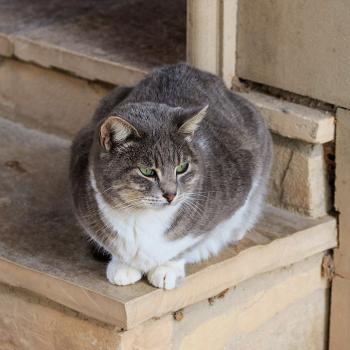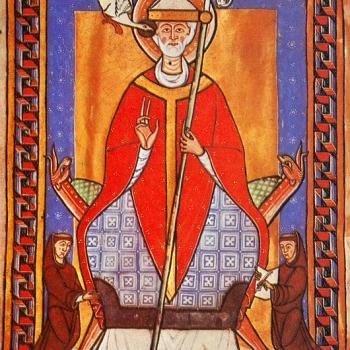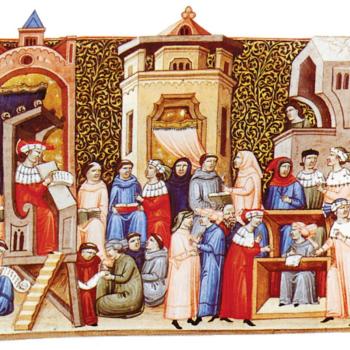In one of my classes this spring, my students are reading one of the books that made me fall in love with medieval history: Eamon Duffy’s The Voices of Morebath: Reformation and Rebellion in an English Village. When we start our class discussion of this book, the first question I always ask students is what stands out to them. And the answer is almost always the same thing: the sheep.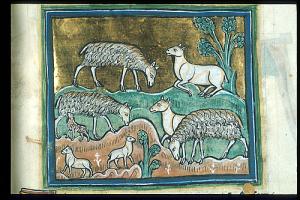
Detail of a miniature of sheep and ewes. From British Library Royal 12 F XIII f. 35
Students are usually staggered by the sheer importance of sheep to the small parish of Morebath; their church experiences, to hear them tell it, have had a sad dearth of sheep (and their petitions for an emotional support sheep for our campus have so far been unsuccessful, despite the campus’s abundance of green grass). While there are certainly a number of sheep sprinkled throughout the book and across the present-day Devonshire countryside, to me, however, a different thing stands out when I read the Voices of Morebath: the way that for the members of a medieval parish, their community was formed almost entirely through and around their church.
Although parishes varied wildly in size, the point of the parish was to be the living representation of the body of Christ– which meant that the body had to know each other. Thus, parishes were often of a size where you could know everyone in your parish. In a village like Morebath, with only thirty-three households and around 150 parishioners, you would know them very well indeed (Duffy 4–5). Even in busy cities like London, parishes were meant to be communities: your parish church would be filled with the people of your neighborhood, the same people you saw at work, in the streets, and as you went about your daily life. You would gather together with them to hear sermons, to observe the sacraments, and to mark important occasions in each other’s lives: births, confirmations, weddings, and deaths.
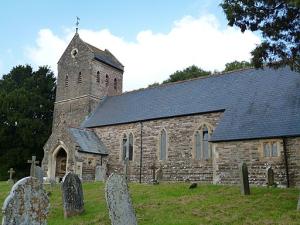
To medieval parishioners, however, practicing their religion within their church encompassed far more than masses or sermons in a church building. As Katherine French notes in her book The People of the Parish, “lay interaction in the parish resulted not only from mandatory attendance at mass, visitations, court appearances, or tithe gatherings . . . parishioners also assembled for local saints’ days, family and neighborhood baptisms, marriages, funderals, parish fundraising activities, theater productions, and building maintenance, events which involved individual choice and personal interest” (22). The parish was the center of the community’s social world. Activities like church ales helped raise funds to support the church, while also providing space for communal festivity. More chaotic activities like Hocktide– a fundraising activity in which the young women would capture and tie up the young men of the parish, demanding funds for their release, and then the young men would do the same the next week– provided a chance for hilarity and perhaps even some flirting. And if the flirting got out of hand, or if you neglected to meet your financial commitments to your church or committed some other offence, it would be within your parish that you’d be disciplined as well. We know that most parishes had a yearly reading out of who had fulfilled their responsibilities to the church and who had not (Duffy 34–46). In other instances, those who disrupted the parish had to publicly process around the church, through the marketplace, and to nearby churches, with their offenses read aloud as they did so (French 35–36).
Lay positions like churchwardens also provided accountability for the ordained church leaders, and if the clerics or churchwardens were failing in their duties, the people of the parish had ways to hold them accountable, either by appealing against them in church courts or simply by using the community to pressure them into fulfilling their duties well. A rather dramatic example comes from the case of one Richard Ricottes, who, when in trouble for neglecting child support, suddenly started listing the failings of the churchwardens and clergy of his parish, resulting in fines for them as well. For better or for worse, the ordinary men and women of medieval parishes knew each other and knew each other well. The rhythms and notes of their lives melded together into a single tune– sometimes harmonious, sometimes discordant, but always sounding together.
Although public readings of financial giving seem to push more towards inequality in today’s church than to encourage generosity, it does seem to me that in our post-Reformation move towards faith as an individual belief, we have left something behind. In medieval parish churches, you lived, served, and worshipped along the same community of people inside and outside of church services. With that degree of life lived together comes at least some inherent accountability (even without the public readings). The recent failings of so many churches in our modern context, particularly in holding church leaders accountable for their wrongdoings, highlights that we as a church desperately need some of that accountability from the church community, not just from structures or leaders. And in our modern context, with so many individuals struggling with isolation and loneliness, we certainly need some of the engagement and community that came with the medieval parish.
For most of us, it’s likely not feasible to move to a church-centered community laid out like a medieval parish, although a few places are trying to create them. But can we find ways to reclaim some of the benefits of this medieval model of living as the body of Christ in our local contexts? It seems to me that part of this comes in thinking more about church as a commitment to those in our community than as something that we want benefits from– in thinking more about how we can serve and invest than in what we can get from a church, whether that be a children’s program that is the perfect fit or amazing preaching or worship that is just our style. It also seems that a key part of the medieval model, at least on the ground, was the accountability provided by laity who were actively involved in their parish. This is certainly something we can pursue in our own church communities: as we invest in our churches, we can also invest in making sure that they are places where those in the community are held accountable for the care of those around them and for the wellbeing of the church. In creating churches that hold members accountable, we can also create safe spaces in which we can be more fully and safely known– spaces where we can belong and flourish. Sheep may be out of the question, but we can certainly follow some of these medieval models in our own communities as we seek to create churches that reflect the communal nature of the body of Christ in healthy ways.


